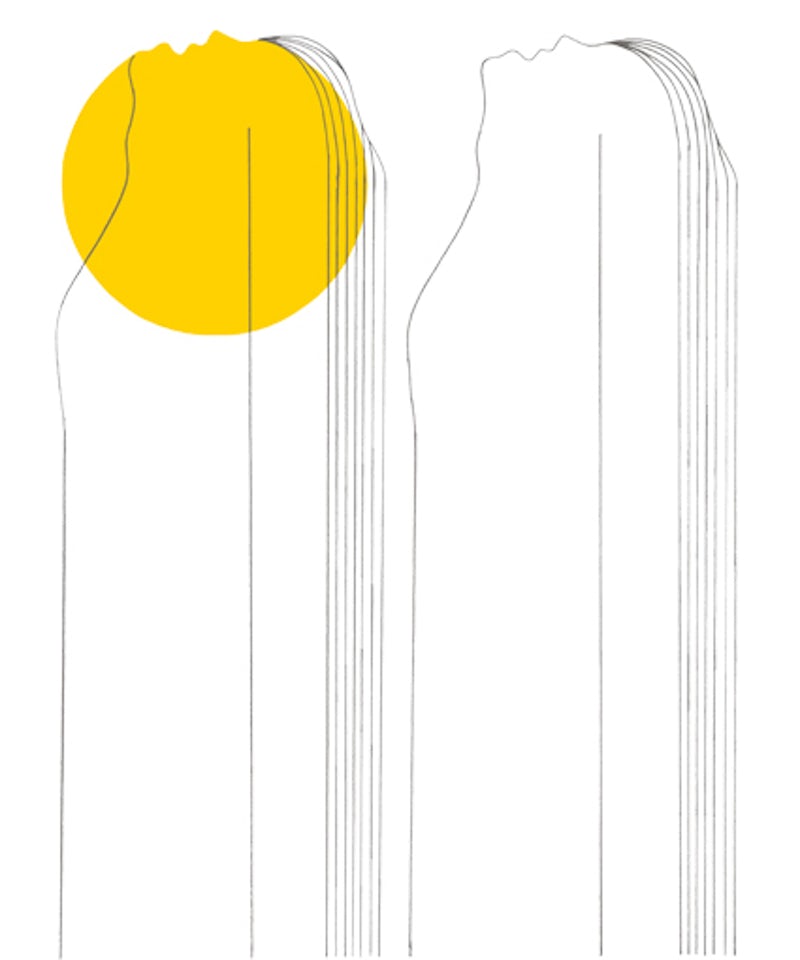History
In 1947, Lode Craeybeckx wanted to establish a multipurpose building for cultural activities: he proposed to build a Palace of Liberation in the city park: a place for concerts and other cultural events, but in particular for modern art. However, due the poor financial situation of post-war Antwerp, these plans were quickly put away. In the early sixties, Craeybeckx, then mayor, made a second attempt to build a (national) museum of modern art. This time, he had the plot opposite the Royal Museum of Fine Arts (KMSKA) in mind, the place where the Hippodrome Theatre was in decline. Again, the price tag put an end to the plans.
However, one didn’t let go of the idea, and different parties began to work on the creation of a museum of modern art in Antwerp. In 1966, architect Léon Stynen submitted a proposal to build a museum on pillars near the medieval fortress Het Steen. This project was rejected for fear of impeding the port activities. In 1970, Stynen submitted a second proposal: in the neighbourhood Linkeroever, he wanted to realise Le Corbusier’s unexecuted ‘Musée à croissance illimitée’ (Museum of unlimited growth). The prestigious project was well received and it was decided to construct it in the Middelheim Park. But construction works were halted because the park was declared a green zone.
A start: the I.C.C.
In 1970, the Ministry of Dutch Culture established the Internationaal Cultureel Centrum (I.C.C.) in the former Royal Palace on the Antwerp Meir. The I.C.C. was the first public institution for contemporary art in Flanders. According to Ludo Bekkers, the centre’s first director, the space had to become a location where everything was possible, from exhibitions and concerts to happenings and theatre workshops for children and adults.
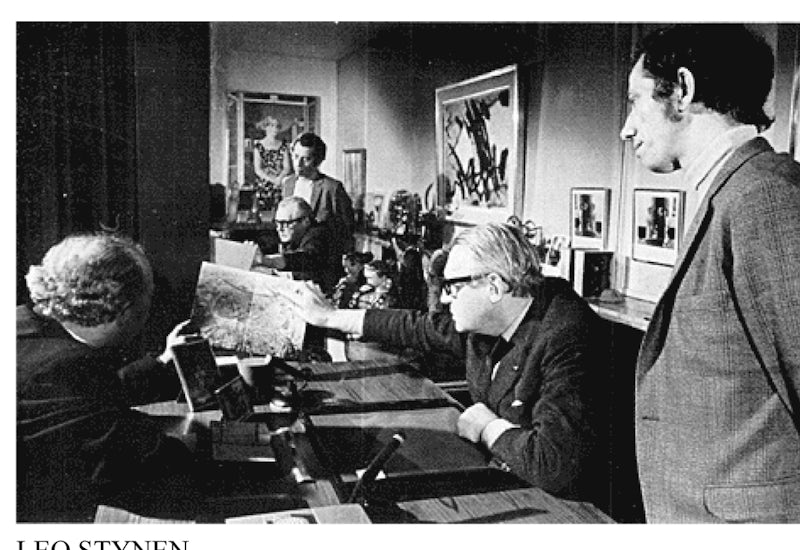
In the period 1972-1981, under the leadership of Flor Bex, the centre evolved into a dynamic meeting place for art(ists) and audiences. The I.C.C. in its initial period can thus be seen as the immediate precursor of M HKA. Indeed, M HKA is also formally heir to the I.C.C.: the latter’s important documentation centre, library and video library were included in M HKA.
Gordon Matta-Clark
In 1977, Flor Bex invited American artist Gordon Matta-Clark for an exhibition at the I.C.C., who was given the opportunity to intervene in a vacant building on the Ernest Van Dijckkaai, near Het Steen. In honour of the four hundredth anniversary of the Antwerp Baroque painter Peter Paul Rubens, the artist called this work Office Baroque. Shortly after Matta-Clark’s death in 1978, Bex suggested to preserve Office Baroque as an homage to the artist and to integrate it as a core of the new museum for contemporary art, which was to be built on the surrounding parcels.
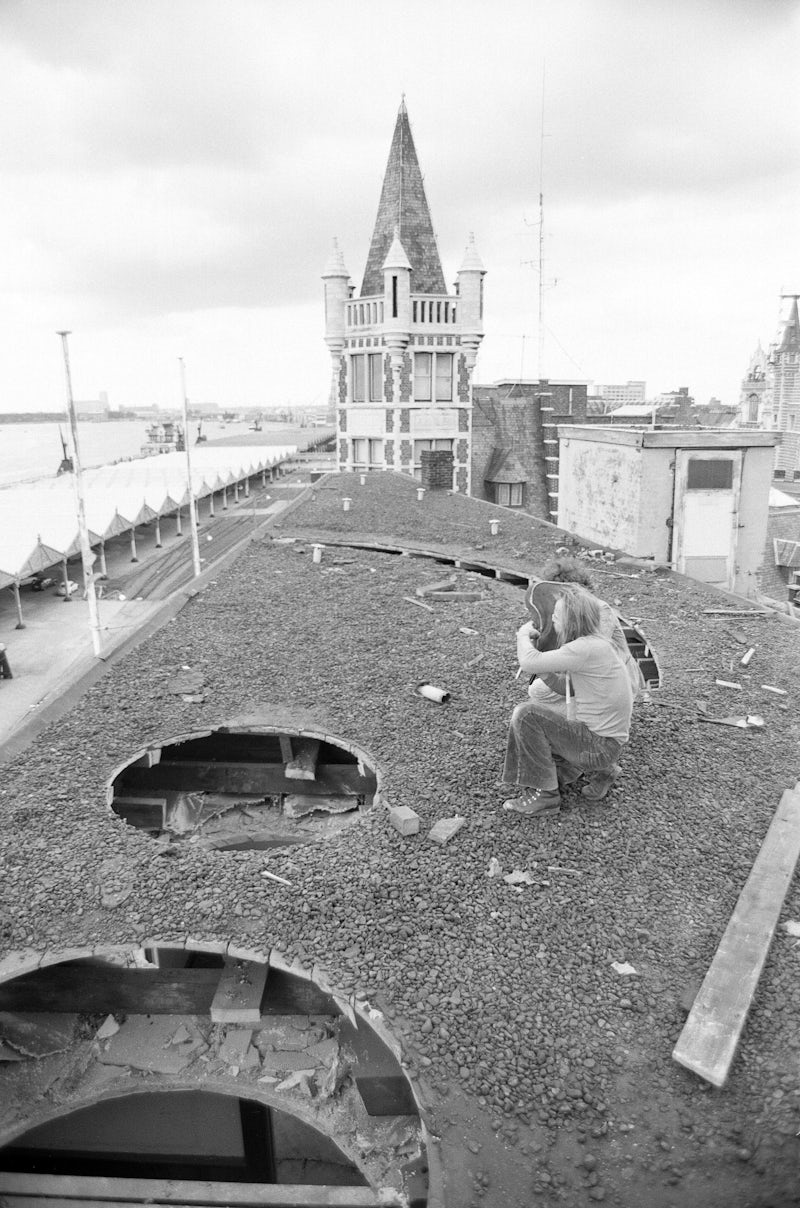
This idea was well received and the Foundation Gordon Matta-Clark was established to raise the necessary funds. Numerous artists from Belgium and abroad donated a work, in an effort to secure Office Baroque or, in case that would fail, to contribute to a basic collection of the new museum for contemporary art.
Foundation
Finally, in 1982 the Flemish Community decided to found M HKA. The Zuid (South neighbourhood) seemed like the ideal location for the new museum – with its Royal Museum of Fine Arts, the province’s plans to also set up a museum for photography (now Fotomuseum Antwerp, FoMu), ample parking on the Gedempte Zuiderdokken, the presence of important galleries, and the proximity of the river Scheldt. In 1985, a former grain silo in the Leuvenstraat was purchased and the construction works could start.
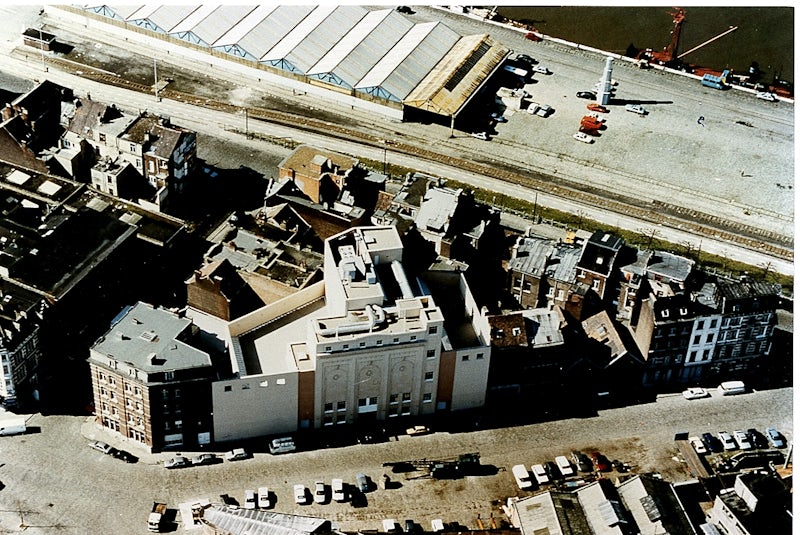
On September 20, 1985, M HKA was officially established. On June 20, 1987, the museum was inaugurated with about hundred fifty works from the Foundation Gordon Matta-Clark as a starting point for the collection. The inheritance of the I.C.C. formed the starting point for the museum’s vision and policy. M HKA’s first director was also I.C.C.’s former inspirer: Flor Bex. The museum’s first exhibition was devoted to the work of Gordon Matta-Clark.
Structure
Finally M HKA was established, as an initiative of the Flemish Community. The necessary decrees date from Karel Poma’s period (1981-1985) as Community Minister of Culture – Poma being a great advocate of a museum of contemporary art in Antwerp. However, the museum was realised when Patrick Dewael was Minister of Culture of the so-called Vlaamse Executieve (Flemish Executive), the forerunner of the Flemish Government.
One opted for a status of non-profit organisation (‘vzw’) to maximise the new museum’s agility and flexibility. However, there’s a very close tie with the Flemish Community: together with the Royal Museum of Fine Arts Antwerp (KMSKA) and the Gaasbeek Castle, M HKA is one of the three museums of the Flemish Community, and for its funding it relies almost exclusively on that government. Furthermore, the Flemish Community is owner of both M HKA’s buildings and its collection.
The first 15 years: 1987-2002
During Flor Bex’s time as director, M HKA developed into a dynamic museum that payed attention to contemporary artists from the region who were placed in an international context. Exhibitions were organised at a high pace and despite the tight budget, the collection grew substantially each year: after 15 years, the museum’s collection already consisted of about seven hundred artworks. The collection policy focused on the period from 1970 on and every now and then, the museum could afford to purchase a work from that period. Usually though, the purchasing policy followed contemporary art closely, especially focusing on purchasing brand new work from the 1980s and 90s.
M HKA was setting the tone in Flanders as far as the development of museum interpretation public relations was concerned and was developing a carefully composed range of educational activities and other forms of guidance for young and old.
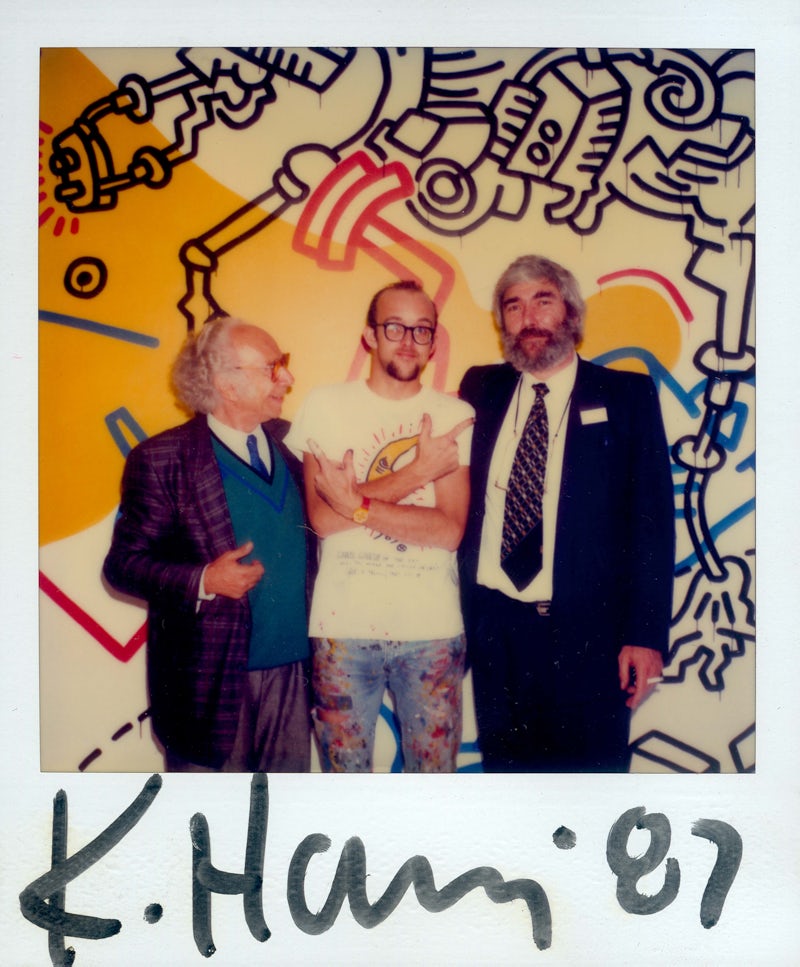
New management and new policy
February 2002, Bart De Baere becomes the new director of the M HKA; late 2002, the museum presents its new approach. M HKA now organises a large temporary exhibition yearly, on the ground floor, and a constantly changing collection presentation on the upper floors. In the collection presentations, room is made for small interventions by artists. That way, they are given the opportunity to experiment in and with a museum context. The new policy reduces emphasis on Belgian art(ists) in favour of a broader international perspective and a search for trends in contemporary art. Belgian art continues to occupy an important place, yet more pronounced, as part of a larger whole. The M HKA itself has indeed ‘made a connection’: in 2003, the merger with the Centre for Visual Culture is completed, as a result of which the outlook is now wider than just the visual arts, encompassing visual culture in its totality.
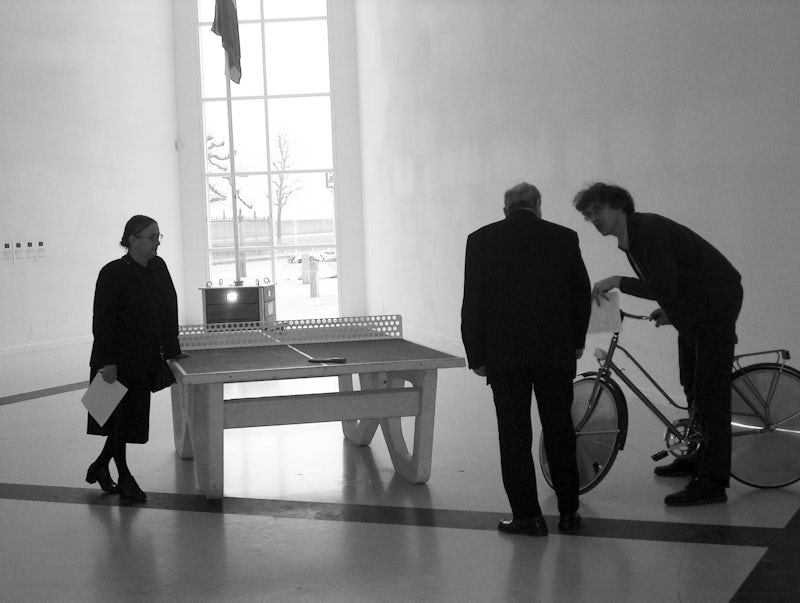
In addition to the works of the Foundation Gordon Matta-Clark, M HKA’s collection includes own purchases as well as permanent loans from the Flemish Community. Purchase policy follows developments in contemporary art in a broad, international perspective, with special attention to audiovisual works and artist’s ensembles. Meanwhile, the collection includes more than 6.500 works, with big names like Kutlug Ataman, Francis Alÿs, Marlene Dumas and Jan Fabre; and objects, including a series of Polaroids by Luc Tuymans. Over the last few years, several ensembles have been purchased, including works by Sergei Bratkov, Jimmie Durham and Wilhelm Sasnal. Artworks from places where contemporary art is much less evident are purchased as well, for example works by the Egyptian Amal Kenawy or by Indian artist NS Harsha. M HKA also possesses the Vrielynck Collection, a collection of pre-cinema objects and film hardware of international importance.
Since January 2007, the property in Biekorfstraat 2, Panamarenko’s former home and workplace, is also part of M HKA’s collection. In 2009, M HKA invites the artist Enrico David to create a work for the exterior of the museum.
